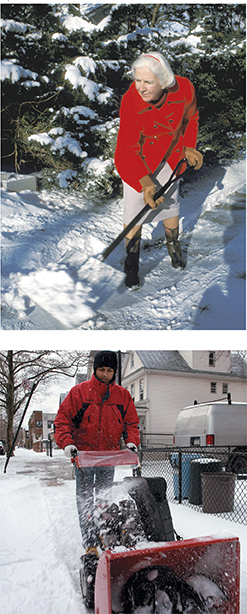Figure 3 Power is the rate of doing work. Because the snow blower can remove more snow in less time, it requires more power than hand shoveling does.
Comparing and Contrasting What is the source of power in each of the above photos?

Units of Work
When using SI units in the work formula, the force is in newtons, and distance is in meters. The product of force and distance results in the units of newtonmeters, also known as joules. The joule (J) is the SI unit of work. When a force of 1 newton moves an object 1 meter in the direction of the force, 1 joule of work is done. The joule is named after James Prescott Joule (1818–1889), a British scientist famous for researching the relationship between work and heat.
Using the Work Formula
It is easy to calculate the work done by a weight lifter who lifts a 1600-newton barbell over his head. Assume that the barbell is lifted to a height of 2.0 meters. To use the work formula, simply substitute the correct values into the formula and multiply.
What Is Power?
Often people are not just concerned about getting work done. They want it done fast, and that requires power. Power, like work, has a precise meaning in science.
Power is the rate of doing work.  Doing work at a faster rate requires more power. To increase power, you can increase the amount of work done in a given time, or you can do a given amount of work in less time.
Doing work at a faster rate requires more power. To increase power, you can increase the amount of work done in a given time, or you can do a given amount of work in less time.
Figure 3 shows an example of what a difference in power means when performing a task such as snow removal. Work is required to move snow from one location to another. As you can see in Figure 3, a person using a shovel and a person using a snow blower can both do the work needed to remove the snow. Clearly, the snow blower can do the job much faster. The fact that the snow blower can do more work in less time means that it has more power.
You may have noticed that the size of the engine used by a machine is often an indication of its power. For example, compare the snow blower's small engine with the engine used by a truck pushing a snowplow. The truck's powerful engine allows it to remove snow at a very fast rate.
 How does doing work at a faster rate affect the power required?
How does doing work at a faster rate affect the power required?




